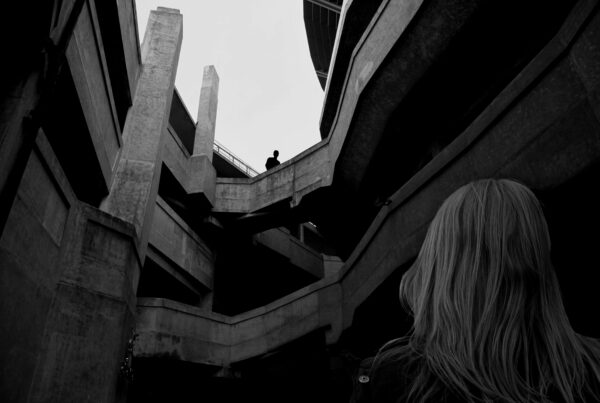In the wake of their triumph in the Cold War, liberals seem to have lost all sense of history. This makes it unsurprising that critics of liberalism are increasingly common. Like fungi in a half rotten wood, post-liberals seem to be constantly underfoot. Whether on the left or the right, these attacks often share a common theme – they see liberalism as a homogenizing force. One that destroys traditions and oppresses those who do not meet its normative standards. These attacks make clear just how important it is that liberals understand their history and the various strains of the ideology to which they are committed.
At the heart of liberalism is a dedication to the rights and freedoms of the individual. Such rights are seen as inherent and transcending culture, sex, nationality, or any other particular circumstance. In the long history of this ideology there have been many disagreements about how best to achieve the liberation of mankind. Some argue that freedom can be secured only in a democracy, others argue on behalf of a strict legal framework as the means to the end, and some see all government as the chief threat to freedom. These disagreements form the competing schools of liberal thought. A collection of ideas so diverse it often feels as if there are as many interpretations of liberalism as there are liberals. However, if we cut through the fog of disputation, we can narrow liberalism down into two competing camps: pluralist and statist. The disagreement between these two views defines much of our modern age and the future of genuine human flourishing hinges on the victor.
The Origins of Liberalism’s Divide
The political tradition we refer to as liberalism developed organically in Europe as the solution to practical political problems. For centuries the Catholic Church held Western society together as the one cultural force that united disparate kingdoms and tribes. In the wake of the Protestant Reformation, this social unity collapsed. Once brought together by faith, if nothing else, Europe soon descended into bloody religious warfare. Liberalism emerged as the resolution to this strife.
Among early adherents, to the liberal tradition, two very different methods of resolving the fractures in European society emerged. For many reformers, particularly in England, these cultural divisions could best be solved by leaving questions of the human good to local institutions and the individuals who live and work within them. From this point of view, the broader purpose of the regime became securing the freedom thought necessary for such a diverse and complex society to flourish. The most famous move in this direction is the Magna Carta but the rise of representative government, guilds, and congregationalist religions all stem from this liberal impulse.
Other liberals – such as Fredrick the Great of Prussia – felt that the hegemony of the Church could only be replaced by the spread of enlightenment values to every part of society. In this view, there was little room for local institutions to govern themselves since these same institutions most often clung to medieval values with great fervor. Thus, for these advocates of enlightened despotism, the only tool capable of truly spreading liberal principles such as equality, liberty, property rights, and religious toleration was the state itself.
For some time, these political practices did not clash. One derived from a popular movement swelling up from the people themselves while the other was imposed from the top. In many instances, they worked together to forge liberal culture. However, in time these contradictory liberal impulses began to fracture into two separate strains. Influential political thinkers – such as John Locke, Voltaire, Montesquieu, and Immanuel Kant – began to choose sides. As a product of this intellectual dispute, two very different ideologies emerged within the liberal tradition – pluralist liberalism and statist liberalism.
Pluralist Liberalism
The heart of pluralist liberalism is an appreciation for the complexity of society and the modern world: people are varied, culture is complicated, and most issues of significance are deeply contested. Rather than wade into the mess and try to find a solution, pluralist liberals emphasize leaving individuals to pursue the good in their local institutions – such as schools, churches, hospitals, and so on – that stand between the citizen and the state. As the American thinker and statesman Daniel Patrick Moynihan observed: “these liberals hold that between the individual and the state is to be found a great and beneficent array of social and economic entities. They believe that in the strength of these voluntary private associations … lies much of the strength of democratic society.”
In recent years, pluralist liberalism has taken on two forms in the United States. One more left leaning and the other more right leaning. The more conservative variety, typified by people like Milton Friedman and Ronald Reagan, argues a healthy society is best secured by the government entirely stepping back from the issues that confront humans in their daily lives. In practice, this typically means that the government’s job is to simply guarantee negative liberty – freedom from restraint – for all people. The more left wing variety of pluralist liberalism is championed by men like the previously quoted Daniel Patrick Moynihan who think the government has an important role to play in enlivening “the little platoons” from which culture springs. A prime example of this can be found in such pluralist liberal’s support for welfare and the funding of schools regardless of religious affiliation.
Statist Liberalism
While pluralist liberals emphasize the importance of a diverse and complex society to achieve freedom, statist liberals focus on using the national political apparatus as the key to human liberation. Their motivating belief is that human freedom can advance and endure only through a massive expansion of government involvement into all levels of society. Because only such a powerful state can enforce the principles that make freedom possible.
The terrors of the French Revolution and the bureaucratic bullying of the British Empire are statist liberalism’s most infamous moments. Though it has been deployed in many other instances that are more ambiguous such as in Kemalist Turkey. In America, statist liberalism became popular during the progressive era when it understandably seemed to many that only the force of government could adequality challenge the tyranny of corrupt industry. More recently the Great Society expanded American statist liberalism into an attempt not only to drastically remake economics but society itself.
The Contemporary Problem
In truth, the liberal tradition requires both its statist and pluralist strains. Humans can only be meaningfully free in smaller communities, but this freedom is also meaningless without government protection of certain rights. Thus, liberal politics must often be a balancing act between these two contradictory impulses. When pluralism grows too strong, the government must step in to guarantee individual rights. When this protection of rights begins to overstep its basic mandate and erode intermediary institutions, then the state must be restrained.
In recent years, we have lost this balance and statist liberalism has emerged as the dominant ideological strain in the liberal tradition. This seeming triumph of the statist impulse is a natural response to the sheer complexity of modern government. As the French liberal thinker Bertrand De Jouvenel argued in his masterwork On Power, modern warfare and social needs have made almost inevitable the widespread belief that only an overwhelmingly powerful state can solve the problems of modernity. Chief among these problems is national security. Many of the state expansions we have experienced in recent years have been rationalized as an attempt to give liberal democracies the tools they need to stand up to their totalitarian enemies.
Even more understandable, have been modern expansions of the state that seek to guarantee rights to all people. In the late twentieth century, it became increasingly clear to most liberal democracies just how maligned and mistreated large swaths of their population were. To put the issue simply: though these countries may be dedicated to human liberation, that freedom did not always extend to racial, ethnic, gender, or sexual minorities. For many liberal reformers, the national state became the only institution forceful enough to ensure these groups were not robbed of their rights by local communities, religious organizations, or the government itself. Thus began the ongoing effort to regulate away every modicum of discrimination in the modern world.
Many of these expansions of the state are understandable and have done much to advance the liberal cause. However, the tilt towards statist liberalism without a strong pluralist counterpart is starting to fracture the tradition it seeks to promote. Far from driving liberation and progress, the intrusion of the state into every aspect of human life has led to the collapse of civil society. As a number of social scientists have shown (most famously Robert Putnam), the intermediary institutions that stand between the individual and the state are drying up. The result is a population plagued with feelings of isolation. In short, we need pluralist liberalism more than ever.
The Road to Reviving Pluralist Liberalism
How then do we restore pluralism and reinvigorate liberalism? The question is a complicated one but, as is often the case, the simple answer is the best: liberals should seek to weaken the state’s power to regulate social life. The key to enacting this dramatic change is for the government to adopt the separate spheres model crafted by Dutch theologian and statesmen Abraham Kuyper.
In the United States, liberalism has committed itself wholesale to the idea that we must fashion a “neutral” public space that embraces no major cultural or religious tradition. While this is certainly one way in which pluralist liberalism can achieve its goals, it is not the only one. Nor is it the best one. Many post-liberal critics are correct when they point out the sheer futility of such an endeavor. Kuyper offers an alternative, one in which each cultural sect is permitted to create its own hospitals, schools, charities, and the like. A system in which each group is entitled to equal government support and is, within the bounds of the constitution, permitted to adhere fully to its own principles.
The genius of the separate spheres model that it the decisions that most affect people’s lives – the sort of schools available, the medical treatments they are permitted to pursue, how to deploy nearby natural resources, and so on – will be handled locally. By the people who work and participate in these institutions. Not by the federal government. The result is a society that is far more democratic, with everyone participating in the running of the various institutions that surround them.
Many liberals have long held reservations about the separate spheres model. They fear that it merely empowers local institutions to discriminate against minorities. While this is a legitimate concern, there are ways to solve this problem. It is possible to forbid outright discrimination while still allowing incredible amounts of leeway for local institutions to define themselves. For instance, saying that a school must accept all students regardless of personal background says nothing about the curriculum that should be offered in the school. That issue should not be a question for the government to decide.
In short, the separate spheres model empowers the “little platoons” of society to manage themselves once again while still making possible the punishment of overt illiberalism within these institutions. However, such an initiative is just the first step on the long path to restoring pluralist liberalism. It is a path worth taking. For if we successfully navigate its twists and turns we shall discover the joy of a diverse society. One in which we can both govern the most important aspects of our lives while living with and learning to appreciate those fundamentally different from ourselves.
Jeffery Tyler Syck is an incoming assistant professor of political science and American Studies at the University of Pikeville.
Photo: made by John Chrobak using “Cesar chavez en huelga hall de colegio cesar chavez” by Movimiento licensed under CC BY-SA 4.0







